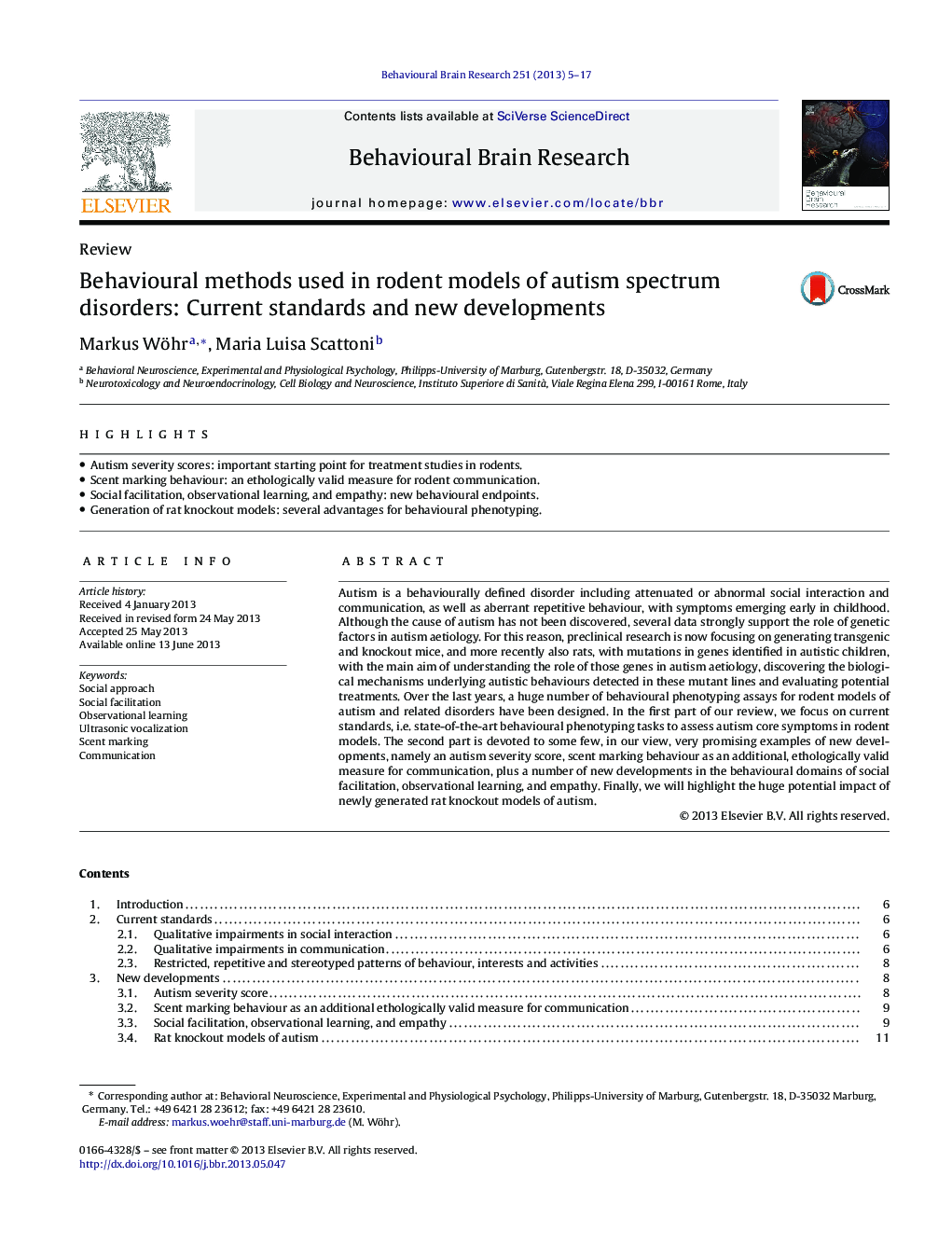| Article ID | Journal | Published Year | Pages | File Type |
|---|---|---|---|---|
| 6259058 | Behavioural Brain Research | 2013 | 13 Pages |
â¢Autism severity scores: important starting point for treatment studies in rodents.â¢Scent marking behaviour: an ethologically valid measure for rodent communication.â¢Social facilitation, observational learning, and empathy: new behavioural endpoints.â¢Generation of rat knockout models: several advantages for behavioural phenotyping.
Autism is a behaviourally defined disorder including attenuated or abnormal social interaction and communication, as well as aberrant repetitive behaviour, with symptoms emerging early in childhood. Although the cause of autism has not been discovered, several data strongly support the role of genetic factors in autism aetiology. For this reason, preclinical research is now focusing on generating transgenic and knockout mice, and more recently also rats, with mutations in genes identified in autistic children, with the main aim of understanding the role of those genes in autism aetiology, discovering the biological mechanisms underlying autistic behaviours detected in these mutant lines and evaluating potential treatments. Over the last years, a huge number of behavioural phenotyping assays for rodent models of autism and related disorders have been designed. In the first part of our review, we focus on current standards, i.e. state-of-the-art behavioural phenotyping tasks to assess autism core symptoms in rodent models. The second part is devoted to some few, in our view, very promising examples of new developments, namely an autism severity score, scent marking behaviour as an additional, ethologically valid measure for communication, plus a number of new developments in the behavioural domains of social facilitation, observational learning, and empathy. Finally, we will highlight the huge potential impact of newly generated rat knockout models of autism.
